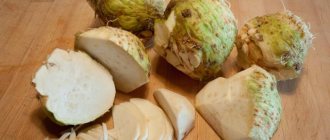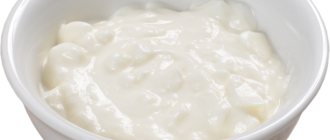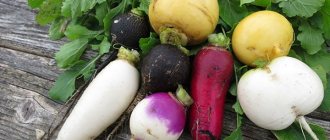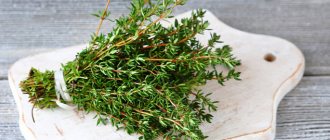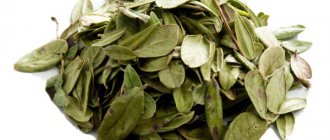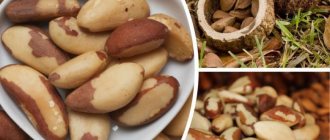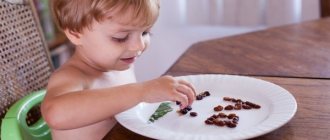Schisandra decoction: what is it?
The evergreen vine is a large family of plants. The wild plant has 23 different species. You can meet it in the east, south and southeast of Asia. Chinese lemongrass is widely used for medicinal and household purposes.
The fruit and berry plant, discovered many years ago, continues to gain popularity due to its beneficial properties.
3 common types
- Far Eastern (Chinese). Due to the popularity of the fruit, many residents of the growing areas are engaged in its procurement. There are plenty of people willing to buy dried leaves and berries in different countries;
Important . Among the 23 plant species, Chinese lemongrass has the strongest medicinal properties. Therefore, a drink made from its leaves is widespread.
- Crimean. Also known as iron tea or Tatar tea. An annual plant grows in the mountainous areas of Crimea. The appearance is reminiscent of ada tea from Turkey;
- Japanese. It is included in this family for its lemon-like taste. In fact, it represents flowering plants of the Rosaceae family. Rarely used for tea drinking.
Tea drinking with Chinese lemongrass
Schisandra chinensis - features of use
Schisandra berries are widely used in alternative and classical medicine. At home, they are consumed fresh and dried, the juice is squeezed, and jam and drinks are prepared.
The pharmaceutical industry does not lag behind traditional healers. On the shelves of pharmacies you can find many medicines based on schizandra. The most famous of them is lemongrass tincture with alcohol.
Schisandra berries in medicine
The unique properties of the fruit pulp have found wide application in official pharmacology. Prepared from Chinese berries:
- dietary supplements – Schizandra Plus complex, Terra-plant, Schizandra with blueberries;
- Schisandra extract in tablets;
- syrup. In addition to schisandra berries, the product contains rosehip extract and ascorbic acid;
- tincture of schizandra seeds and fruits;
- powder from the berries of the plant, which is consumed dry or dissolved in water;
- dried fruits;
- herbal teas In addition to lemongrass, they contain rose hips, blueberries, chokeberries and other medicinal plants.
All lemongrass-based products can be freely purchased at any pharmacy without a doctor's prescription.
Attention. According to the latest data, schizandra fruits prevent the development of cancerous tumors. The Russian remedy Lycaol will be useful for older people to maintain health and prevent tumors.
Chinese lemongrass: beneficial properties and composition
Fresh berries are 85% water. The remaining 15% consists of:
- Organic acids (succinic, tartaric, malic, citric);
- Sugar;
- Pectins;
- Tannins;
- substances having P-vitamin activity;
- Vitamin C.
In addition, the plant contains: phosphorus, potassium, copper, magnesium, calcium, titanium, nickel, manganese, molybdenum, lead, tin, zinc.
The seeds of the plant consist of:
- Essential oils;
- Phytohormones;
- Vitamin E;
- Oleic and linoleic acids.
- They have the same microelements as berries.
The benefits and harms of a drink made from Chinese lemongrass
Chinese healers placed this vine right after ginseng because of its beneficial properties. All its parts contain many useful microelements and vitamins.
- Schizandrin (phytohormone excites the central nervous system, sharpens reflexes, tones and increases endurance);
- Stimulates the functioning of the cardiovascular system and the respiratory system (a powerful stimulant has an adaptogenic effect);
- Berry tincture helps to concentrate, increases psychological endurance, adapts to heavy mental stress;
- Increases visual acuity;
- Vegetative-vascular dystonia with infectious diseases can be treated thanks to berry tincture;
- Protects the liver;
- Restores sexual function lost due to neurasthenia;
- Reduces blood sugar;
- Normalizes the acidity of the gastrointestinal tract, restores digestion.

Benefits of Chinese Schisandra
Benefits for men
It is used as an additional remedy to medications in the treatment of potency problems. Common causes of this problem: stress, inflammation of the prostate. Far Eastern lemongrass will calm the nervous system and reduce stress. Vitamins and other microelements can stop inflammation.
Polysaccharides affect digestion, accelerating the breakdown of food. Accelerated metabolism reduces the likelihood of obesity.
Pregnant women
Reduces toxicosis, raises blood pressure, and nourishes the female body with the strength to bear a healthy child.
Important . Before using the tincture, you should consult your doctor. To get benefits and not harm, you need to choose the right frequency of tea drinking and the permitted volume.
For children
After 12 years of age, the decoction can be used to combat dysentery, prevent influenza and other viral diseases, and reduce stress in children associated with increased mental workload.
For women
Schisandrin with schizandrol has a tonic effect on the body, normalizes metabolism, and increases activity. Thanks to these properties, it helps to lose weight along with exercise.
Tea made from the vegetative parts of the vine works well. They contain fewer stimulants and have a gentler effect on the body. The invigorating effect will not be sharp, but will last longer. Jasmine tea is especially beneficial for women; read about the benefits of jasmine tea.
Application of the plant
According to ancient Chinese historical documents, the emperors of the Celestial Empire, who consumed lemongrass berries, ruled over their subjects for 110-115 years, maintaining physical and mental activity. They had many wives and concubines, because lemongrass helped the rulers maintain their masculine qualities until their death. To prolong youth, the beauties of Ancient China took baths with the juice of schizandra berries and rose, peony, and peach petals.
Chinese lemongrass is indeed a very useful plant. Its second name is schizandra. This plant is widespread in Southern Sakhalin, the Primorsky Territory, China and the Khabarovsk Territory.
The flowers, stems and leaves of Chinese lemongrass have a very pungent odor that is similar to the smell of lemon. This is how the plant got its name. Schizandra blooms in May. It has a really beautiful aroma, so insects pollinate it very actively. After the plant is pollinated by insects, it begins to produce fruits. The fruits have a bright red color. When the fruits ripen, they become soft, with juicy pulp and thin skin. The taste of Schisandra chinensis is slightly sour.
Taste and aroma: description
The tart taste with a citrus aroma will help you cheer up and start the day on a bright note. Holding the drink in your mouth for a while, you can feel a subtle resinous aftertaste.

Taste with the aroma of evergreen vine
The tea leaves containing berries will have spicy notes. The addition of honey gives the drink a sweetish taste, while preserving its natural properties. Consumption of sugar is not recommended. The interaction between the substances in the dried leaves and sugar can be hard on the stomach.
Fresh berries have a sour-salty, bitter taste.
How to brew Chinese lemongrass
You can prepare a tasty and healthy decoction from any part of the vine. The following rules will help maintain a rich taste with beneficial properties:
- Enameled glassware will preserve the taste of the drink;
- At the time of brewing, the lid should be adjacent to the container without gaps;
- Strain the finished broth through four-layer gauze or a tea strainer;
- For 1 liter of water, use 15 grams of dry leaves or berries.

The preparation process consists of the following steps:
- Pour dry leaves or fruits with clean water;
- Boil;
- Cook for 10 minutes;
- Then, turn off the heat, cover the drink with a lid (leave for 5-10 minutes);
- The broth is carefully filtered;
- The drink is ready to drink.
Important. The drink must not be stirred. Damaged fruits or berries can spoil the taste and reduce beneficial properties.
The addition of lemon or honey can add a piquant taste to the drink.
How to take schizandra fruits correctly?
So, how to prepare and how to use lemongrass berries? It is recommended to consume fresh and dried fruits both independently and as part of drinks and desserts. They are prepared from:
- herbal teas;
- decoctions;
- tinctures;
- compotes, jelly, jam.
If you overdo it with the use of lemongrass drugs, even such seemingly harmless ones as various treats, adverse reactions may develop.
Healing remedies based on schizandra have a cumulative effect, so they need to be used for a long time.
Tea and infusion
To get the best results from your treatment, you should learn how to brew lemongrass berries correctly. To prepare tonic drinks, take a spoonful of dried raw materials and pour a glass of hot water. It is better to infuse tea in a thermos for at least 35–40 minutes.
If using fresh berries, cover the hot mixture with a lid and leave for 5-10 minutes. Before adding boiling water, the fruits can be mashed with a spoon until the juice appears.
To prepare the decoction, dried raw materials are used. It is placed in an enamel bowl and heated over low heat for 10–12 minutes. The finished mixture is infused overnight and consumed during the first half of the day.
Schisandra tea is useful for respiratory diseases and improves immunity. To prevent colds, it is recommended to drink the healing drink regularly. And if you add a slice of lemon and a spoonful of honey to it, the effectiveness of the treatment will only increase.
Attention. Taking schizandra during epidemics reduces the risk of respiratory infections by 5–6 times.
For people with a weakened body, loss of strength, or after long-term illnesses, traditional medicine advises preparing an infusion of schisandra berries with mumiyo and dodder. For the potion, take the pulp of the fruit and dodder seeds in equal proportions and pour boiling water over it. A mummy the size of a millet grain is added to the mixture and left for half an hour. The finished drink is filtered and taken in the first half of the day. The course of therapy is 20 days. After the same break, the treatment is repeated.
Chinese lemongrass juice
Fresh or canned schizandra juice is often used to prepare medicinal drinks. The product has the same properties as the pulp of the fruit. The finished nectar is poured into jars and stored. Use it with tea, adding a spoonful of concentrate to a glass of liquid.
Schisandra juice goes well with honey or sugar. The fruit pulp, passed through a juicer, is mixed with the delicacy, heated without bringing to a boil, and sealed. This product can be stored for a very long time.
Schisandra fruit tincture
The therapeutic effect of taking alcohol tincture is no worse than from fresh fruits. It is used as part of a complex treatment for many diseases:
- diabetes mellitus;
- asthenic syndrome;
- disorders of cardiovascular activity;
- pathologies of the liver and gall bladder;
- to restore the body's strength.
You can buy the finished drug at the pharmacy, but it is better to make it yourself. To do this, dry lemongrass berries are poured with vodka and left for 7 days. The resulting product is not filtered. Take the tincture twice a day, diluting 30 drops of the product in a glass of liquid. The course of treatment is a month. After 15–20 days, therapy is repeated.
This is a large climbing shrub-liana from the magnolia family. Its length reaches fifteen meters, and entwining trees, lemongrass resembles a grapevine. The thickness of the stem is 2 centimeters. The plant takes the form of a bush in the northern regions. Schisandra leaves are light green, petiolate and slightly fleshy, mostly arranged in tufts, and their petioles can be either reddish or pink. The flowers are cream or white in color with a pleasant scent, and the stamens, 3-5 pieces, are united in a thick column.
Schisandra berries are 2-seeded, bright red, juicy, spherical, very sour. The seeds smell like lemon and have a bitter, pungent taste. The bark of the roots and stems also smells like lemon, hence the name Schisandra.
The liana grows wild in the south of Sakhalin, in Primorye; it can also be found in broad-leaved forests, in river valleys, along the edges, and in clearings. Abundant harvests of lemongrass occur once every few years, and due to careless cutting of branches during harvesting, the growth of the bush is stopped.
How to choose
Usually the fruits and seeds of lemongrass are harvested. As they ripen, the fruits are collected. And the drying process consists of two parts: first, the lemongrass berries are slightly dried in the air for two to three days, and after that they are dried in a special dryer or a conventional oven. Initially, the temperature is set within forty degrees, and by the end of drying it is raised to sixty.
How to store
Unfortunately, fresh lemongrass berries are difficult to find and buy. But summer residents grow this vine on their plots. The fruits, collected in a thin layer in boxes, are immediately dried. Then they are put into small bags.
You can squeeze the juice from fresh berries without damaging the seeds and preserve it with sugar. After standing for a while, the juice acquires a jelly consistency.
Another good way to store fruits is to cover them with sugar, grind them well and put them in a jar. Must be stored in the refrigerator.
Chemical composition
Schisandra fruits contain almost 20% organic acids, the main amounts being malic, citric and tartaric. A little sugar and about 500 mg of vitamin C per 100 grams of berries. It also contains pectins, tannins, saponins, flavonoids, and anthraquinones. Schisandra is rich in essential oils, because there are more than two percent of them in its stem and seeds, and more than three percent in the bark of the stems. Essential oil has found its use in perfumery.
Up to 33% fatty oil is included in the seeds. The oil consists of glycerides of unsaturated fatty acids - oleic and linoleic. Vitamin E was also found in it. Thanks to its composition, lemongrass has immunostimulating, adaptogenic, stimulating and tonic properties.
Nutritional value per 100 grams:
Recipes
Long history has revealed many different recipes. Thanks to this, every gourmet will find his own taste combination. You can brew it from berries and leaves. Lemon, honey, ginger, and other natural ingredients are added to taste.

Recipes for a delicious drink with lemongrass
Schisandra leaf tea
Dry leaves are brewed like ordinary tea. 2 tablespoons of dry leaves are poured into 500 milliliters of boiled water, leave to brew.
Important. Dry leaves do not like boiling water. It damages the leaf structure. Because of this, bitterness appears and the drink loses its beneficial properties. The optimal brewing temperature is from 80 to 90 degrees Celsius. After the water has boiled, it should be left to cool for 5-10 minutes.
Mixing vine leaves with other teas increases the healing properties of the drink, saturates it with aroma, and increases the charge of vivacity. Theanine is found in oolong, pu-erh and other types of tea. This substance is called natural, softened caffeine. At the same time, theanine enhances the invigorating effect of lemongrass leaf tea.
Berry tea
The dried fruits of the Far Eastern plant can be used to brew tea. They can be ordered from China, specialty herbal stores, or pharmacies. For 1 liter of water, use 3 tablespoons of dried fruits. The broth must be boiled and boiled for 10 minutes (do not stir).

Schisandra berry tea
Important. The maximum permitted volume of such a decoction is from 50 to 10 milliliters per day. A high degree of saturation can harm the cardiovascular system, overstimulate the central nervous system, and increase stomach acidity. This exposure will be bad for your health.
Ginger tea with lemongrass
Ginger root has the following beneficial properties:
- Well tones;
- Improves blood flow to the brain, gives clarity, increases concentration;
- Blood flow throughout the body improves;
- Increases metabolism (metabolic speed increases);
- Thins the blood (recommended for tumors);
- Prevention of colds;
- Refreshes taste buds.

These properties are well complemented by the substances contained in the evergreen vine. Thus, the drink is obtained with a unique, rich, fresh taste that strengthens the health of the body.
The preparation method is similar to preparing classic lemongrass tea. For 15 grams of which, 5 grams of ginger are added.
Green tea with lemongrass
This combination is complemented by beneficial microelements from each ingredient in the drink. This decoction will bring cheerfulness, tone, energy, and health to the human body. To make the tea healthy and tasty, use the following recipe:
- Dried berries - 1 tablespoon;
- 3 teaspoons green tea leaves.
The brewing method is no different from preparing classic tea. Additionally, to taste, you can add ginger, sage, chamomile, lemon, honey and other natural ingredients. They will give the drink a rich aroma and pleasant taste. They will enrich it with missing microelements, increasing its usefulness.

Adding Schisandra to Green Tea for Eyes
Recommendation. In order not to mix the blanks yourself, you can use ready-made ones. Tea houses sell ready-made mixtures. There, professionals mix the necessary ingredients in the right proportions to make the future broth tasty and healthy.
Black tea with lemongrass berries
Much is known about the beneficial properties of black tea and pu-erh. Drinking these decoctions separately or together can complement each other with beneficial properties. At the same time, their leaves and dried berries can be brewed together into one drink. Complementing each other, they make extremely healthy tea. The action of the substances contained in black tea will soften the sharp stimulating effect of schisandrin contained in the berries of the vine.
For 3 teaspoons of black tea leaves, add one identical spoon of berries. The resulting mixture is poured with boiled water at a temperature of 80-90 degrees Celsius and infused.
In tea houses you can buy a ready-made mixture, mixed in the correct proportions.
Schisandra leaf tea
Many people know about the invigorating and tonic properties of ginseng, eleutherococcus, and coffee, but few have heard that lemongrass tea, which you can prepare yourself, and even grow this Chinese plant in your garden, is perfect for replenishing energy.
Schisandra - what is it?
Representatives of the Schisandraceae family are deciduous or evergreen plants and vines. The family is quite large and numerous; according to various sources, it unites 14–23 species. The plants are wild and grow mainly in South, East and Southeast Asia.
Due to its medicinal properties, one of the plants of this family has found wide use in medicine, pharmacy and home use, namely Schisandra chinensis.
You can often hear its synonymous names: medicinal lemongrass and Far Eastern lemongrass, lemon tree (lemons do not grow on it).
Now this wild plant is often cultivated by gardeners as a fruit plant.
In addition, there are other plants of the same name that find their application. For example, Crimean lemongrass (synonymous name - Tatar tea, shepherd tea), growing on the slopes of the mountains of the Crimean peninsula and is an endemic herbaceous plant. There is also Japanese lemongrass. At its core, it is not lemongrass, but its real name is chaenomeles, or Japanese quince.
Chinese lemongrass is the true medicinal lemongrass, so tea made from it has the most valuable health properties.
Composition and properties of lemongrass tea
The healing properties of lemongrass tea are due to the chemical composition of the plant itself, namely it contains:
- lignans - the main one is schisandrin; in addition to it, about 10 different lignans were found in Schisandra in all parts of the plant, which have an invigorating, tonic and stimulating effect, and also activate metabolic processes in the liver;
- organic acids: citric, malic, ascorbic;
- flavonoids – provide an anti-inflammatory effect;
- catechins;
- anthocyanins;
- the essential oil contained in the leaves and bark has a lemon scent; Essential oils also have anti-inflammatory and antiseptic effects.
Interesting! Previously, the plant always accompanied male hunters; tea made from it was good on the road: the drink eliminated fatigue, reduced the feeling of thirst, increased endurance, and improved vision at dusk. Thanks to him, men could more easily overcome difficult transitions.
Benefits of lemongrass tea
Schisandra tea is known for its beneficial effect on performance, both mental and physical; the effect is noticeable from the first use, while the increase in strength occurs gently and is not accompanied by strong overexcitation.
The drink is useful for disorders of the nervous system, physical and mental exhaustion, and gastritis with low acidity.
In addition, tea from lemongrass leaves will help strengthen the immune system during epidemics and after suffering from serious illnesses.
Note! Use during the acute phase of an illness (such as influenza) is strictly not recommended and may cause harm rather than benefit.
You can also find infusions and preparations from this plant in recommendations for the treatment of anemia, sexual dysfunction, nephritis, cardiac neurosis, pulmonary tuberculosis and liver disorders. Tea with the addition of lemongrass is a good remedy for treating depressive conditions and improving mood together with other methods of therapy.
Possible harm of lemongrass tea
In some conditions, lemongrass tea and its preparations should be treated with caution and avoided to avoid harm, for example if a person has:
- increased nervous excitement;
- arterial hypertension;
- epilepsy;
- chronic liver diseases;
- disturbance of cardiac conduction and heart rhythm;
- increased intracranial pressure;
- stomach diseases accompanied by high acidity: hyperacid gastritis, ulcers, heartburn;
- insomnia.
Children's age is also a contraindication to the use of Chinese medicinal vine.
Side effects are rare and usually manifest themselves in the form of insomnia, rapid heartbeat, and allergies. In any case, when using tea, you must remember the beneficial properties and contraindications.
Is it possible to brew lemongrass leaves into tea?
Almost all parts of the plant have healing properties, so you can safely brew the fruits, bark and, of course, lemongrass leaves. They can be taken fresh or dry; for a deeper tea color, you can combine leaves and small pieces of young shoots.
Where to find lemongrass leaves and how to prepare them?
If you are a gardener, you can plant a vine directly on your site; it will please the eye and serve for decorative and medicinal purposes. And you can pamper yourself with invigorating tea all year round for many years to come. It must be remembered that raw materials must be collected on time and properly prepared.
It is optimal to harvest the leaves after flowering, but before they change color in the fall, the leaves should be glossy. In order to preserve the vines, plants prepared for pruning are used for harvesting.
Source: https://po-lune.ru/chaj-iz-listev-limonnika/
How to drink correctly
You cannot drink an independent decoction from different parts of the evergreen vine in large quantities. 50-100 milliliters per day is the optimal rate. The plant grows in the highlands of southern and southeastern Asia. Thanks to this, its parts have a high concentration of trace elements. In moderate dosage, they bring great benefits to various organs and parts of the body. However, excessive consumption of such a drink can lead to bad consequences.

Ripe Chinese lemongrass
The main danger is increased stomach acidity. May cause gastritis, ulcers and other gastrointestinal diseases.
It is forbidden to drink this decoction on an empty stomach, because it causes an increase in gastric juice. In an empty stomach, the process of digesting its own enzymes begins.
Advice. Before use, you should consult your doctor. It will help you choose the right time and volume for tea drinking.
When adding lemongrass to other tea drinks, you should limit yourself to two teas.
- It is recommended to drink no more than two cups a day of oolong, pu-erh, and red tea;
- Abuse of lemongrass can cause pain in the gastrointestinal tract.
Contraindications and side effects
Although Schisandra berries are a unique remedy that has been used in Eastern medicine since time immemorial, you should consult your doctor before taking them. They have a number of contraindications that need to be remembered:
- individual intolerance to components;
- high blood pressure;
- nervous excitement, insomnia, emotional stress;
- mental illness, schizophrenia;
- epilepsy;
- heart rhythm disturbances;
- acute inflammatory processes;
- increased gastric secretion.
It is not advisable to give lemongrass pulp to children under 10 years of age without consulting a pediatrician. The drug is a powerful stimulant and can negatively affect the child’s condition.
Advice. Schizandra fruits are best taken in the first half of the day. If consumed late, they will cause central nervous system stimulation and insomnia.
In case of an overdose, headaches, chest discomfort, increased heart rate, allergies, and stomach problems are noted. If such symptoms appear, you should stop using lemongrass and consult a specialist. In addition, it is not recommended to take fruit pulp together with sedatives and hypnotics, since they are antagonists.
Production
All parts of the vine can be eaten. Each has its own beneficial properties when prepared correctly.

Schisandra: harvesting
- The bark is harvested in the spring;
- The vine is harvested at the moment of fruit ripening;
- The leaves are harvested at the moment of blooming (this is how healing mucus is obtained during leaf fall);
- Berries begin to be collected from the end of September until the first frost (as they ripen).
Any elements must be cut carefully with a sharp knife. Liana is a delicate plant that does not like damage. It is recommended to place bunches of berries in an enamel basket.
Important. Fruits cannot be stored without processing for more than a day. After 24 hours they begin to deteriorate.
The berries are dried whole, and the leaves with other parts are finely chopped for drying. The crop must be dried in a dry, moisture-protected place. Sunlight must be dosed to eliminate the fermentation process.
How to choose and store correctly
Dried ingredients are stored in fabric bags. Fabric bags can be blown with fresh air.
The dried parts of the vine with fruits like a dark, dry place protected from moisture.
You should purchase the mixture for your future drink from reliable suppliers to ensure proper transportation and storage. Before purchasing, look carefully at its components: the berries should be smooth and without damage. The same rule applies to leaves, bark and vines. The smell is light, tart aroma without mold.
Advice. Before purchasing, you can ask the seller to brew the drink. Tea houses that respect their reputation always do this. You should buy it when you like the aroma and taste.
Chinese lemongrass: contraindications
A tea drink based on it has a strong stimulating and tonic effect. Before using it, you should consult your doctor.

A mixture of Chinese lemongrass and other teas
A moderate amount with regular tea drinking will benefit the body, while excessive consumption (even on an empty stomach) will cause harm instead of benefit.
Contraindications include: hypertension, insomnia, epilepsy, rapid excitability of the nervous system, pregnancy, breastfeeding, hypertension, problems with intracranial pressure, gastritis, stomach ulcers and other diseases of internal organs.
Why is it useful?
Due to its unique chemical composition, it is included in the list of the 10 most useful medicinal plants in the world. For more than 2000 years, Chinese doctors have been using not only the fruits, but also the branches, bark, leaves, roots and flowers of Schisandra to treat various diseases.
- For depression and stress. Berries have a beneficial effect on a person’s physical and mental state, relieve depression and stress. They have a positive effect on the male body, elevate mood and give a boost of energy. It is a natural stimulant of the central nervous system, which is why schizandra is often used as a tonic. In eastern countries, the fruits of Schisandra chinensis are consumed to maintain high productivity during the working day.
- The energetic, refreshing and stimulating effect is especially noticeable during intense mental work, which requires concentration and quick decision-making. Natural medicines are made from the seeds. They relieve fatigue, drowsiness, fight bad mood and depression, and improve the activity of brain cells. Schisandra fruits increase the amount of glutathione enzyme in the body, which is responsible for mental clarity, facilitating rapid adaptation to various stimuli, and improving mental health.
- Maintains hormonal balance due to its positive effect on the adrenal cortex. Thanks to the presence of phytoestrogens, Schisandra chinensis berries help fight premenstrual syndrome and unpleasant symptoms of menopause.
- Have a beneficial effect on the heart. Schizandra-based medications have a protective effect on heart tissue damaged by long-term use of strong cardiotoxic drugs, such as in cancer chemotherapy. The high level of antioxidants in the composition of Schisandra chinensis allows its berries to be used in the treatment of heart diseases of any type.
- Improve liver function, restore its cells and protect against toxins. The last beneficial property of Chinese lemongrass is due to the action of fat-soluble components found in the seeds of the plant. They contain approximately 40 lignans, many of which have a positive effect on liver function. Like the extract, they promote the regeneration of hepatocytes, protect against the destructive effects of medications, alcohol and industrial solvents. The product has already helped more than 500 patients in the treatment of hepatitis, so the anti-hepatitis drug “Schizadrin C” was developed on its basis.
- Inhibits the growth of cancer cells, such as leukemia, in test tube tests. However, at the moment, doctors do not advise using schizandra to treat cancer, pending more in-depth research.
Other beneficial properties of Schisandra chinensis:
- helps with respiratory diseases (protracted cough, bronchial asthma and pneumonia);
- helps to avoid complications of diabetes;
- has a positive effect on blood composition;
- beneficial for preventing visual fatigue;
- effective for stomach upsets and diarrhea;
- promotes the healing of wounds and ulcers on the skin;
- reduces sweating;
- stimulates the uterus and helps strengthen its walls;
- helps with heavy menstrual bleeding;
- increases immunity, protects against colds and flu;
- preserves youth and beauty of the skin.
- acts as an aphrodisiac, a worthy alternative to ginseng.
